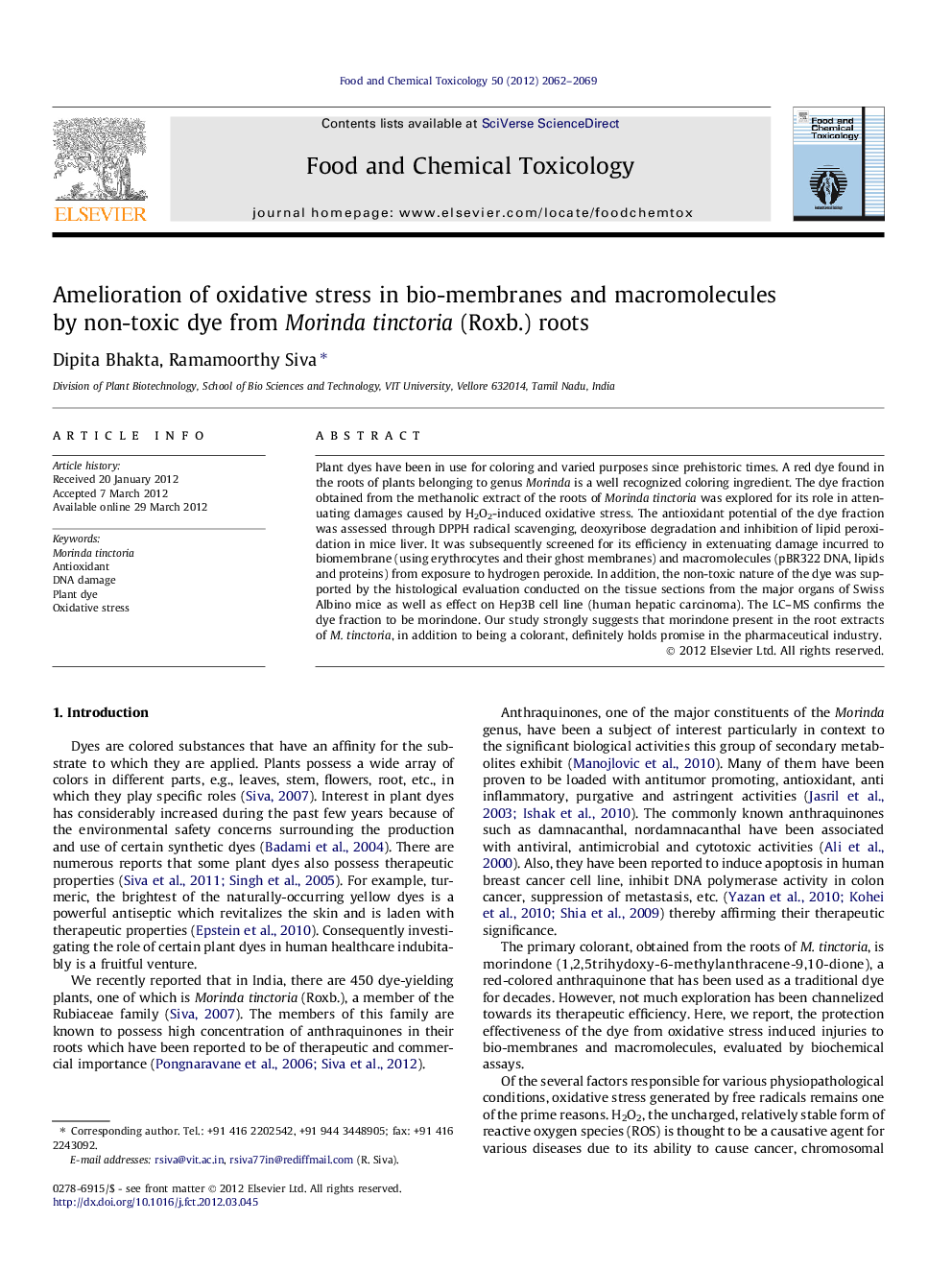| کد مقاله | کد نشریه | سال انتشار | مقاله انگلیسی | نسخه تمام متن |
|---|---|---|---|---|
| 5852876 | 1130853 | 2012 | 8 صفحه PDF | دانلود رایگان |

Plant dyes have been in use for coloring and varied purposes since prehistoric times. A red dye found in the roots of plants belonging to genus Morinda is a well recognized coloring ingredient. The dye fraction obtained from the methanolic extract of the roots of Morinda tinctoria was explored for its role in attenuating damages caused by H2O2-induced oxidative stress. The antioxidant potential of the dye fraction was assessed through DPPH radical scavenging, deoxyribose degradation and inhibition of lipid peroxidation in mice liver. It was subsequently screened for its efficiency in extenuating damage incurred to biomembrane (using erythrocytes and their ghost membranes) and macromolecules (pBR322 DNA, lipids and proteins) from exposure to hydrogen peroxide. In addition, the non-toxic nature of the dye was supported by the histological evaluation conducted on the tissue sections from the major organs of Swiss Albino mice as well as effect on Hep3B cell line (human hepatic carcinoma). The LC-MS confirms the dye fraction to be morindone. Our study strongly suggests that morindone present in the root extracts of M. tinctoria, in addition to being a colorant, definitely holds promise in the pharmaceutical industry.
⺠Dye obtained from Morinda tinctoria roots alleviate H2O2-induced membrane and macromolecular injury. ⺠Non-toxic nature of dye was confirmed by histopathology evaluation in Albino mice. ⺠The major component of the dye was deduced to be morindone based on MS analysis.
Journal: Food and Chemical Toxicology - Volume 50, Issue 6, June 2012, Pages 2062-2069